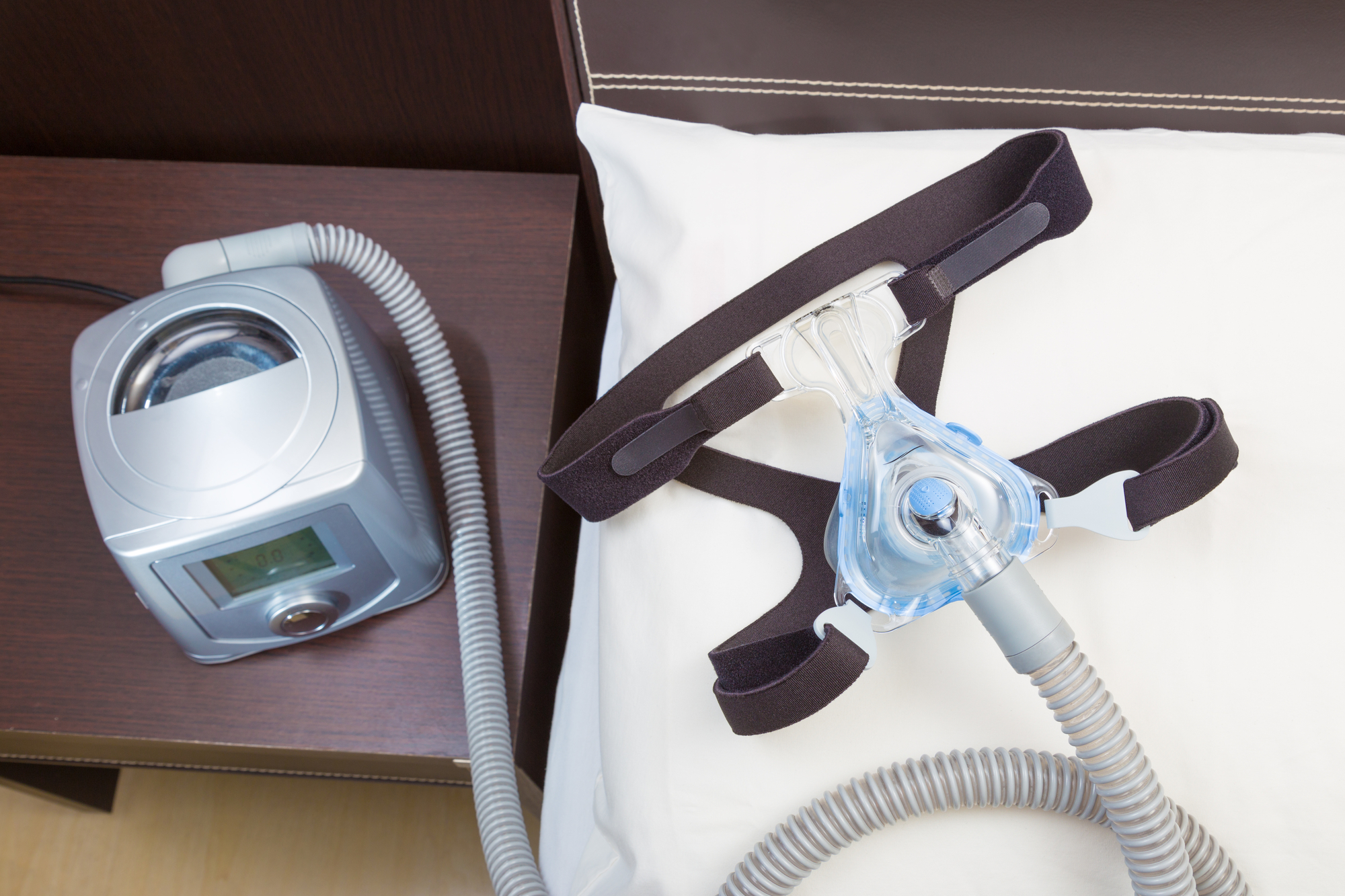Maximizing CPAP Efficacy: A Guide to Care and Maintenance
Mar 18, 2024
If you snore a lot or wake up often during the night, you might have a disorder known as sleep apnea. Obstructive sleep apnea syndrome happens when specific throat muscles relax during sleep. Central sleep apnea occurs when your brain doesn’t send signals to your breathing muscles.
Regardless of your type, continuous positive airway pressure therapy is a common form of treatment. Also known as CPAP, this therapy involves using a machine to help keep your airways open as you sleep.

With proper use, CPAP equipment helps to manage sleep apnea effectively. This leads to lower risks of severe health complications and better sleep quality.
At Unity Health Network, our doctors offer expertise in sleep apnea treatment. And it’s crucial to maintain CPAP machines to ensure they keep working as they should.
Understanding CPAP Therapy
Sleep apnea can cause throat muscles to become too relaxed — blocking your airways as you sleep. This causes you to stop breathing and start again throughout the night. Poor sleep, daytime drowsiness, and other deeper health problems result.
CPAP equipment moves air through your airways during sleep. This helps prevent sleep interruptions that lower sleep quality.
How do these machines work?
They typically include:
- Mask for your nose, mouth, or both
- Hose or tubing connecting CPAP masks to the motor
- Air filter to clean the air before you breathe it in
- Motor
- Adjustable straps for a comfortable fit
- Humidifier with water chamber to help prevent dryness
- CPAP machines pressurize air, then move it through tubing to a mask. This happens continuously, which helps support stable breathing.
CPAP therapy can help boost your quality of life and ease sleep apnea symptoms.
The benefits of this treatment include:
- Less snoring
- No airway collapse during sleep
- Regular breathing
- Reduced daytime drowsiness
- Better mood
- Lower risk of morning headaches
- Improved blood pressure
- Better ability to concentrate during the day
The Importance of CPAP Care and Maintenance
CPAP machines need routine cleaning and care. Without it, they might not work effectively. They can also harbor bacteria, allergens, fungi, and other pathogens. Regular CPAP maintenance helps ensure your equipment keeps working correctly and doesn’t increase your risk of illness.
It’s recommended to clean your CPAP machine regularly — including the mask, hose, and other components. What can happen if you don’t? Your apnea symptoms might get worse again. You might also have nasal congestion or other symptoms of infection.
Step-by-Step Guide to Cleaning Your CPAP
How do you clean a CPAP machine? Some parts may need daily cleaning if you feel they aren’t running as well. But, for the most part, the machine and parts might only need cleaning once, maybe twice a week.
The American Sleep Apnea Association recommends the following:
- CPAP masks: Every two days
- CPAP nasal pillows and mask cushions: After every use
- CPAP tubing or hose: Clean once a week and dry after every use
- Straps: Once a week
- CPAP hose connectors: Once a week
- Water chamber: Once a week
- Reusable CPAP filters: Once a week
Always follow the manufacturer’s cleaning instructions for your CPAP equipment. These may vary depending on your brand or type, such as a nasal mask, nasal pillow mask, or full-face mask.
Wipe the outside with a microfiber cloth for the actual machine. You can also do that in between uses if you notice extra dust or dirt you don’t want on the machine. Never place it in water since this can damage the motor.
Disassembling CPAP Equipment
Unplug the machine first, then follow the manufacturer’s instructions for taking components apart. For example, need to empty the water chamber if yours has a humidifier.
Cleaning CPAP Components
You can use diluted vinegar or water and a mild, unscented soap to clean your machine's parts. Cleaning everything actually takes only about five minutes. But you will need to soak your water chamber while you clean, and that will take about thirty minutes.
You can place the CPAP hose, hose connectors, mask, mask cushions, head straps, and chinstraps in the water to either soak or lightly clean and thoroughly rinse. Then, you can hang the hose (most often do so over their shower heads) to drip dry, while everything else can lay on a towel to air dry.
You can take those out of your filters and smack off any access buildup. However, every machine machine usually comes with one or two replacements. So, every two weeks, you can replace the filter altogether.
Reassembling CPAP Machines
Follow the manufacturer’s instructions to put your CPAP machine back together correctly. Make sure all parts are dry before doing so.
Be sure to thoroughly check the equipment for damage before putting it back together. You can then replace damaged or worn parts as needed. Your insurance company and healthcare professionals have an agreed timeframe for each part to be replaced, so they will cover those as needed.
Troubleshooting Common CPAP Issues
CPAP therapy is highly effective. But you can still have issues with using this kind of equipment. Let’s go over some of the more common problems people experience and what to do about them.
Too Noisy
Is your CPAP machine too loud? Try adjusting your mask for a better fit first. You can also place your CPAP machine under your bed to block some of the noise.
Skin Irritation
Does your skin feel sensitive? Or do you have rashes or breakouts? Adjust the straps on your CPAP mask first to ensure it’s not too tight or rubbing your skin. Make sure you also thoroughly clean your CPAP equipment on a regular basis. If this doesn’t help, you might need a different size or another type of mask.
Air Leaks
Is air leaking from your CPAP machine? This stops it from being able to keep your airways open. Replace your mask if it doesn’t seal tightly. Or switch to another type of mask entirely.
Air Pressure Problems
Your CPAP machine needs the correct air pressure levels to work right. Check the air pressure settings if CPAP therapy doesn’t seem to be helping your sleep apnea symptoms. Consult your doctor to find out the correct settings to use.
Too much air pressure? Talk to your doctor if the amount of air pressure coming through your mask is too uncomfortable.
Upgrading and Replacing CPAP Equipment
CPAP equipment wears out eventually. You might need to replace certain parts or the entire machine. When should you upgrade or replace your equipment?
Check your manufacturer’s recommended replacement schedule first. This gives you an idea of how long the components — or the whole machine — will last. Do any parts have visible damage or discoloration? Replace them as soon as possible.
Some parts, like disposable air filters and nasal pillows, might need to be replaced a couple of times per month. What about the tubing, mask, and other components? This varies, with some parts needing a replacement every month. Others might only need to be replaced twice a year.
Your actual CPAP machine should last for many years. But you may want to upgrade to a newer model that offers the latest technology or certain features. It is even recommended that if you have been using your machine while ill, you replace just about all the parts to ensure no bacteria spread.
Unity Health Network for Sleep Apnea Care
Unity Health Network provides comprehensive care for sleep apnea. This includes sleep study options to diagnose this sleep disorder.
Treatment services include:
CPAP therapy, including supplies
CPAP education and equipment assistance
Non-CPAP approaches, such as INSPIRE
Do you struggle with sleep apnea? Have questions about insurance coverage for CPAP machines? Schedule a consultation with Dr. Weidenbecher for a personalized CPAP therapy plan and ongoing support.




